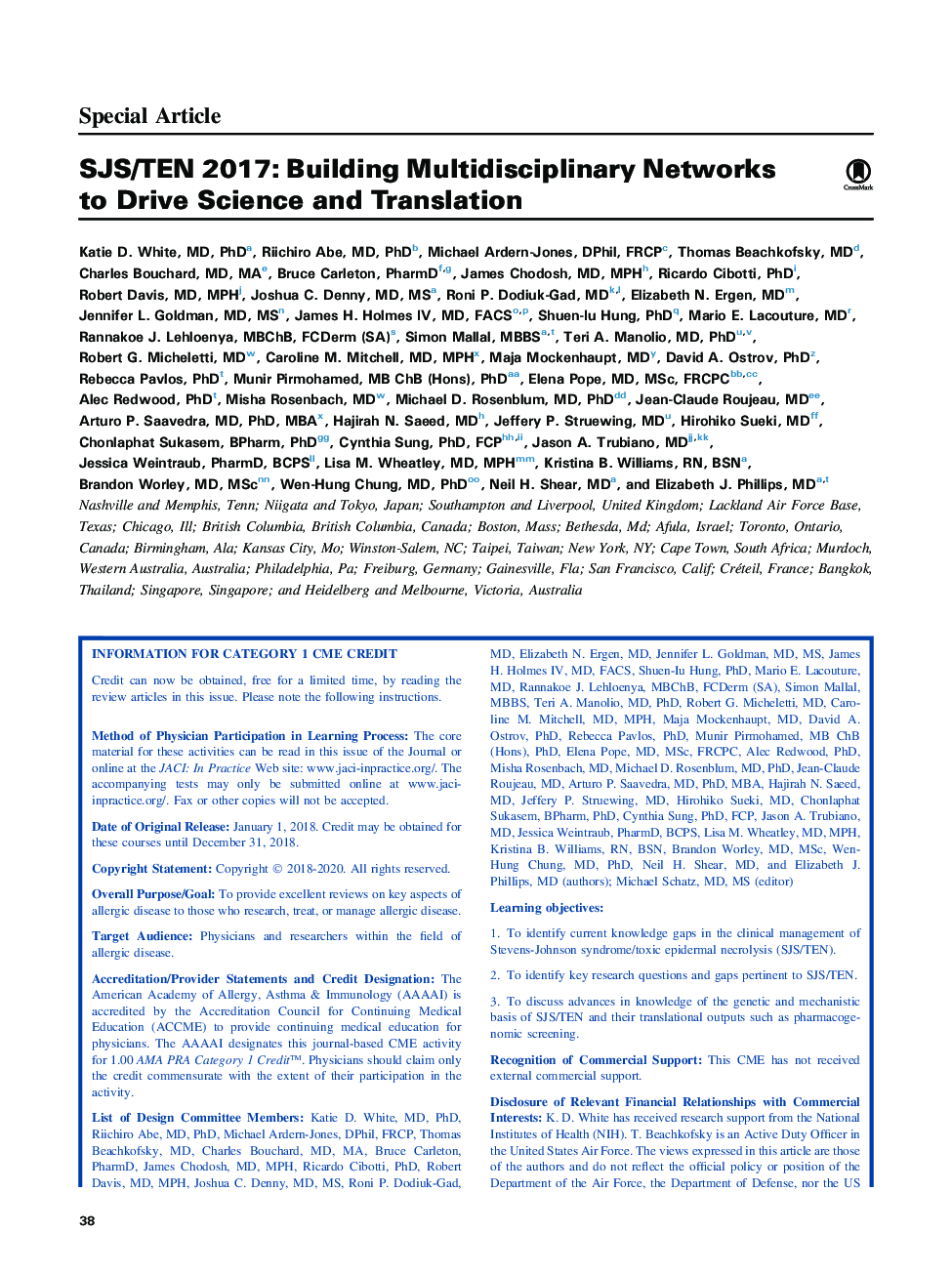| Article ID | Journal | Published Year | Pages | File Type |
|---|---|---|---|---|
| 8714503 | The Journal of Allergy and Clinical Immunology: In Practice | 2018 | 32 Pages |
Abstract
Stevens-Johnson syndrome/toxic epidermal necrolysis (SJS/TEN) is a life-threatening, immunologically mediated, and usually drug-induced disease with a high burden to individuals, their families, and society with an annual incidence of 1 to 5 per 1,000,000. To effect significant reduction in short- and long-term morbidity and mortality, and advance clinical care and research, coordination of multiple medical, surgical, behavioral, and basic scientific disciplines is required. On March 2, 2017, an investigator-driven meeting was held immediately before the American Academy of Dermatology Annual meeting for the central purpose of assembling, for the first time in the United States, clinicians and scientists from multiple disciplines involved in SJS/TEN clinical care and basic science research. As a product of this meeting, this article summarizes the current state of knowledge and expert opinion related to SJS/TEN covering a broad spectrum of topics including epidemiology and pharmacogenomic networks; clinical management and complications; special populations such as pediatrics, the elderly, and pregnant women; regulatory issues and the electronic health record; new agents that cause SJS/TEN; pharmacogenomics and immunopathogenesis; and the patient perspective. Goals include the maintenance of a durable and productive multidisciplinary network that will significantly further scientific progress and translation into prevention, early diagnosis, and management of SJS/TEN.
Keywords
PMTCTEMMPPVAMTREMSTregDSCHASPMRPharmacovigilanceADRIVIgFAERSDIHSSCORTENPrevention of mother-to-child HIV transmissionSJS/TENStevens-Johnson syndrome/toxic epidermal necrolysisFDATNFStevens-JohnsonPMCNSAIDSDHHCPPBMCPD-1TCrnatural killerBSAHuman leukocyte antigenHLAPosttraumatic stress disorderPTSDpositive predictive valuenegative predictive valueRisk evaluation and mitigation strategiesIntravenous immunoglobulinHealthcare professionalTuberculosisElectronic Health RecordSCARItchnonsteroidal anti-inflammatory drugICDtenFood and Drug Administrationbody surface areaperipheral blood mononuclear cellsT cellsdrug-induced hypersensitivity syndromeNetworkssevere cutaneous adverse reactionInternational Classification of DiseasesAdverse drug reactionPharmacogenomicstumor necrosis factorDRESSNPV یا negative predictive valueRegulatory T odds ratioToxic epidermal necrolysisdrug reaction with eosinophilia and systemic symptomsHIVhuman immunodeficiency virusprogrammed cell death protein 1EHRAmniotic membrane transplantationgranulysinT-cell receptor
Related Topics
Life Sciences
Immunology and Microbiology
Immunology
Authors
Katie D. MD, PhD, Riichiro MD, PhD, Michael DPhil, FRCP, Thomas MD, Charles MD, MA, Bruce PharmD, James MD, MPH, Ricardo PhD, Robert MD, MPH, Joshua C. MD, MS, Roni P. MD, Elizabeth N. MD, Jennifer L. MD, MS, James H. MD, FACS, Shuen-Iu PhD, Mario E. MD,
